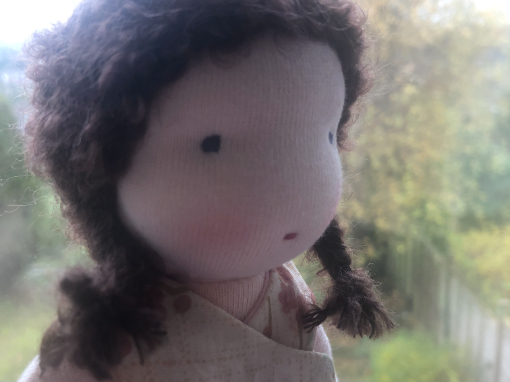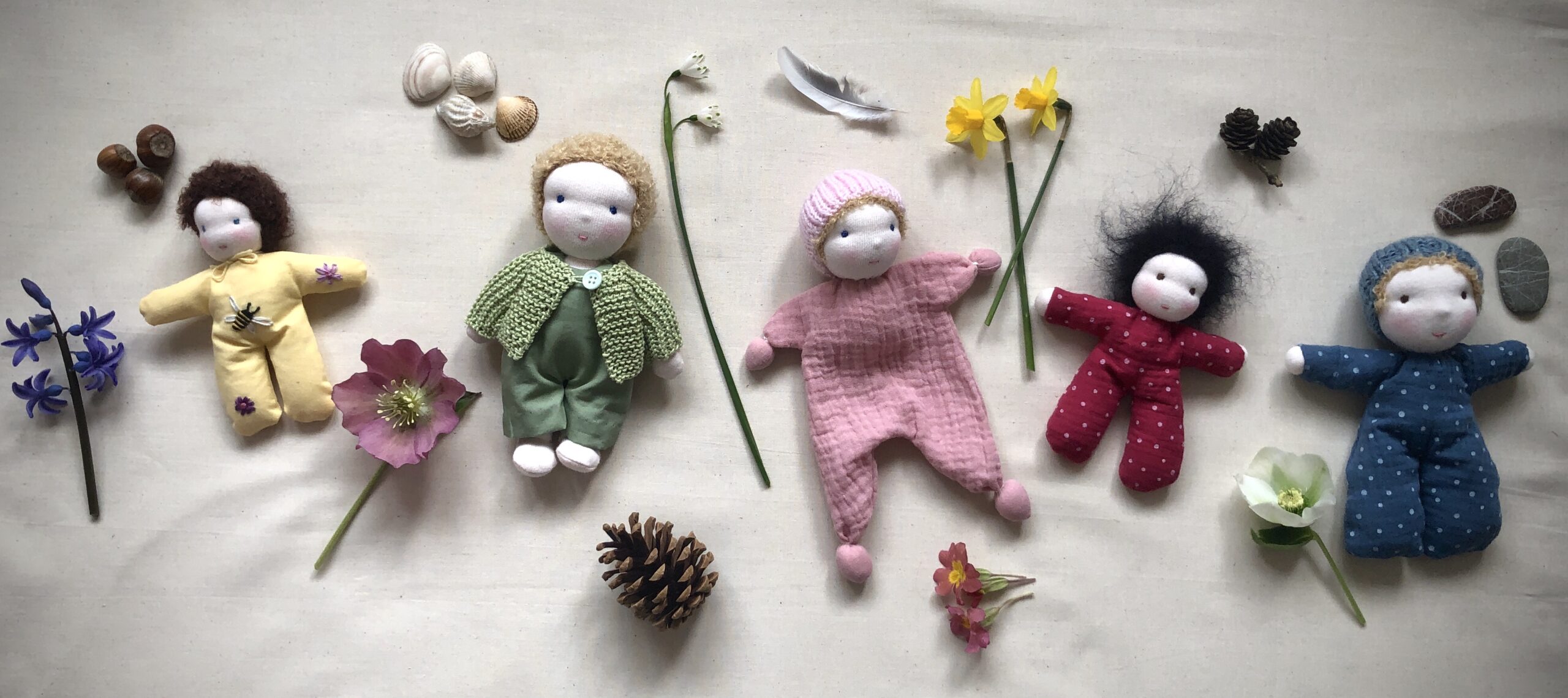What is a Waldorf doll?
Waldorf dolls are simple fabric dolls that have plain and deliberately expressionless facial features. They are made by hand using natural materials and are widely used in Waldorf kindergartens, schools and families.
This is a common definition of Waldorf dolls, but their history and current trends in the Waldorf doll world make it less clear cut. The dolls are now often referred to as “Waldorf inspired” or “Waldorf style” dolls, partly for intellectual property reasons, and partly because opinions differ on whether or not a doll can still be regarded as a Waldorf doll once more detailed features such as a nose and ears have been added.
Historical background
Rudolf Steiner was an Austrian philosopher who founded the spiritual movement of Anthroposophy which forms the basis of Waldorf education. He had strong views on what constitutes a meaningful doll for children, stating:
“You can make a doll for a child by folding up an old napkin, making two corners into legs, the other corners into arms, a knot for the head, then painting eyes, nose and mouth with blobs of ink. […] If the children have the folded napkin before them, they have to fill in from their own imagination what is necessary to make it real and human. This work of the imagination shapes and builds the forms of the brain.” (Rudolf Steiner, The Education of the Child in the Light of Anthroposophy, 1927)
The first Waldorf dolls were made on the basis of Steiner’s thinking during handwork classes at the first Waldorf schools in Germany in the early 1920s. They were not a commercial item that could be purchased, but would have been made either by children themselves or by their mothers or teachers. Some might argue that a true Waldorf doll can never be bought.
What materials are Waldorf dolls made of?
Waldorf dolls are stuffed with cleaned and carded sheep’s wool. Some classic Waldorf dolls are filled with coarse sand, millet or other grains, to give them weight and make them feel more life-like. UK and EU toy safety standards do not allow these materials to be used in toys, and polypropylene beads are not natural, so I have made the decision not to sell any weighted Emmy & Esther dolls.
The outer materials are usually jersey and cotton, and the doll’s hair is made using mohair yarn or other natural yarn. These natural materials have warming and comforting qualities to them. They are what makes the dolls so tactile, and gives them their distinctive yet subtle smell which can become part of a child’s earliest memories.
Why don’t Waldorf dolls have smiling faces?
The facial features of Waldorf dolls are deliberately kept neutral in order to stimulate the child’s imagination – whether the doll is smiling, laughing, crying or sleeping is up to the child who is playing with it at any given moment.
Are Waldorf dolls suitable for babies?
Dolls that are CE or UKCA marked are safe for children from birth, but there are certain types of Waldorf dolls that are more appropriate than others for children of different ages. For example, it is more practical to give a doll without hair and with a soft body to a newborn than a jointed dress-up doll, which a baby cannot use for its intended purpose. You can read all about this in my age appropriateness guide.

The cost of a Waldorf doll
The Waldorf doll making process involves a great number of steps – from forming the head out of a ball of wool, binding it into shape and covering it, to embroidering the eyes and mouth, designing and making the body and clothes, some of which are knitted or crocheted. Every step involves a great deal of precision and care, not only to ensure that the proportions look right, but also that the doll will withstand the stresses of everyday child play. All materials used should be natural, as well as chemically safe for our children (and natural does not necessarily mean chemically safe). These meticulous production methods and careful material choices mean that the final doll is of a very high quality, which is reflected in the price.
My own thoughts about Waldorf dolls
Waldorf dolls formed an important part of my childhood, because my mother enjoyed making them, and I enjoyed playing with them. To this day, I would always choose a Waldorf doll over a plastic doll, because they feel soft and warm and they smell nice.
It is heartening to see so many independent doll makers around the world now selling their dolls. More and more people are beginning to understand and appreciate Waldorf dolls. It would be wonderful if Waldorf dolls became more mainstream; I believe it would take us another small step away from the disposable culture that has slowly crept into our lives, and closer to an appreciation of fewer, better quality belongings that will serve us for longer.
The world needs more Waldorf dolls.
Stay in the loop

